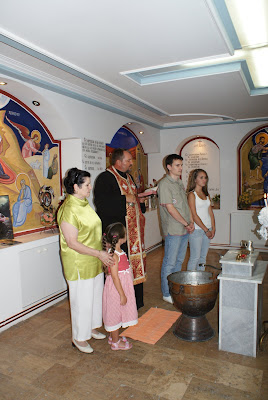It's a Wrap
Seven weeks down and after a penis confirmation, two baptisms, much chatting/translating and cups of Turkish coffee later I have returned home.
Thank God the return flight was much more uneventful than the one coming.
I contemplated kissing the ground when when arrived in the U.S. but wasn't too sure about being able to get back up.... but the thought was there. And I did get misty in the eyes when we passed our first Tar'get on the drive back home.
Overall, it was an amazing trip. I think Truman had her first case of being truly smitten. Which is all good by us since they are separated by an ocean and thousands of miles. (Though they are keeping Skype busy).
This trip was really a trip for the girls. Truman became inseparable best friends with her cousin Tea' and I think her eyes have definitely been opened to the world outside of Abingdon, Virginia. Riley, well, Riley was just spoiled. I doubt boredom ever entered her mind from the moment we arrived until the minute we left. She rekindled the special bond with her Macedonian grandparents after having not seen them for two years. The down side is for Riley is Mommy doesn't feed her on demand every two hours and doesn't hand feed her as she soon learned Baba would. I definitely see weight loss in her future. Both girls continue speaking Macedonian and I hope they can keep that up.
As for me, I'm still pregnant, just bigger.
I have an "expanded" appreciation for all things American. Much more so than I did when I was traveling through Europe in my 20's. I guess getting "older" also means I've gotten a little more pampered to such things as on demand hot water and central heat and air. But I also realize that we (Americans) just don't take the time to truly enjoy life... our families....even the day we have been given. Doing without "things" can bring on that realization pretty quick but then again what have Americans ever really done without?
We are truly blessed to have such a wonderful Macedonian family and the girls and I could not have been treated better or with more love any where else. They made our visit an experience we will never forget.
A special thanks goes out to my good friend, Amy McMurray, who's regular phone calls kept me linked with everything back home and was therefore responsible for my sanity abroad.
I must also express thanks to J.R. Ward, author of the Dark Lover series. I completed six of her books while abroad and they helped many long afternoons pass as I waited for the 100 degree temps to return to a bearable level for venturing out into the evening. The fact that they were awesome was an added bonus.

















































